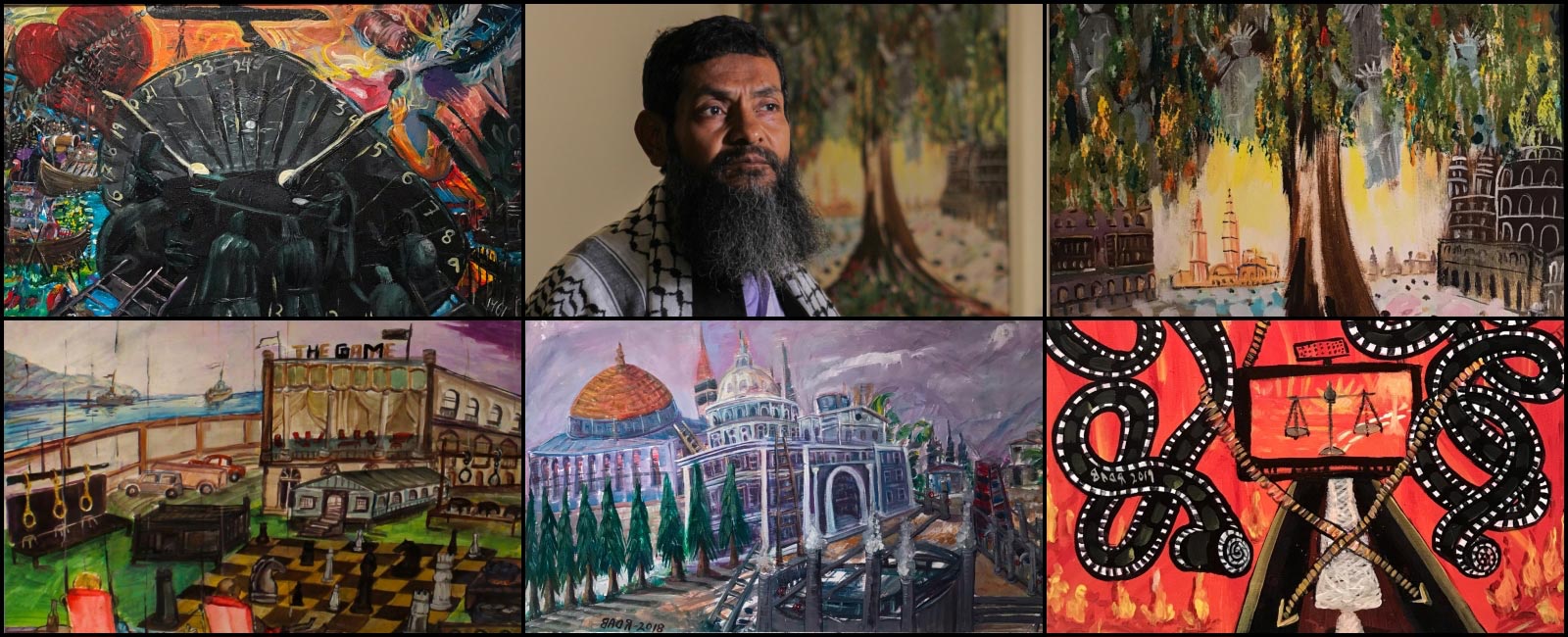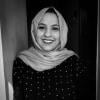How art liberated Pakistani man freed from Gitmo after 20 years of injustice
After years of waiting in internment and being cleared for release by six US government agencies in October 2021, Rabbani brothers finally returned home in February 2023

Muhammad Ahmed Rabbani, a frail Pakistani man in his fifties, is being dubbed as a creator of fascinating but harrowing art using masterful strokes. Lovingly referred to as Badr by his family and friends, he was categorised as prisoner no. 1461 to authorities at the United States of America’s Guantanamo Bay prison in Cuba.
Since September 2002, Ahmed, along with his elder brother Abdul Rahim Rabbani, was detained in different clandestine facilities operated by the US government including Guantanamo also known as Gitmo — one of the world’s most notorious prisons — in a case of mistaken identity with all his human rights stripped away. For 545 days, the two brothers also endured imprisonment and torture in the Central Intelligence Agency’s (CIA) black sites in Afghanistan — dark prison and Bagram jail.
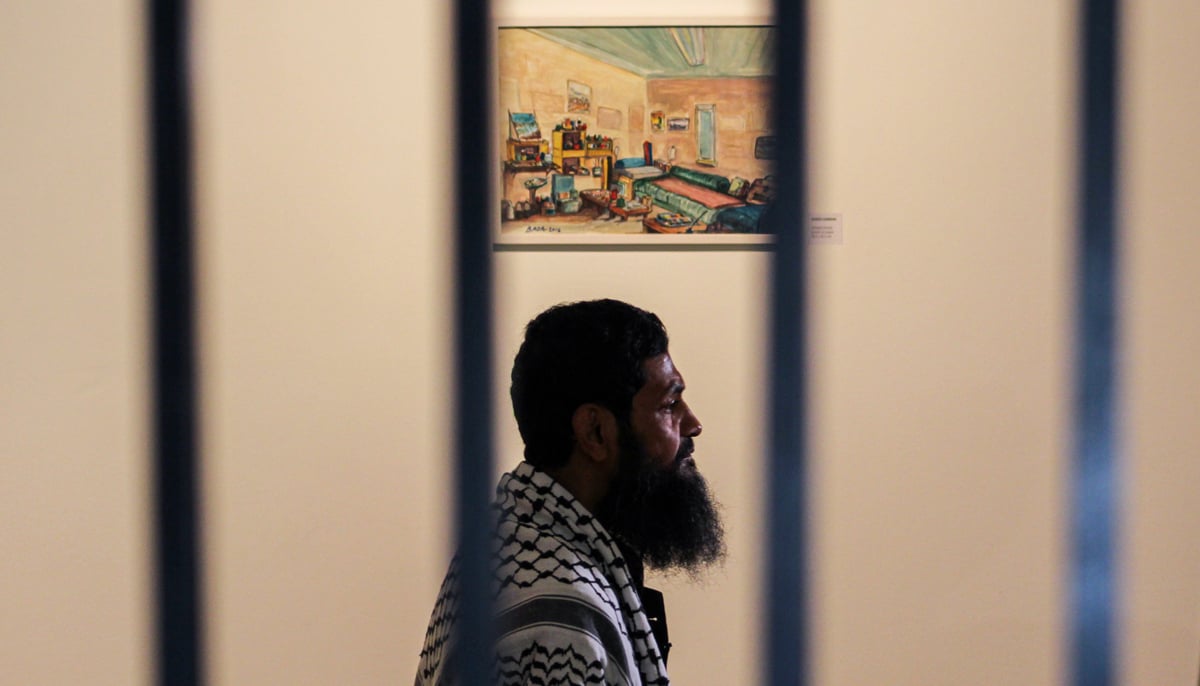
Opened in 2001, soon after the US troops arrived in Afghanistan to banish the Taliban government, the detention facility at Bagram airbase, in the north of Kabul, was shut down on December 10, 2014 — a day after a report on CIA’s use of torture was released. The dark prison, too, is no longer operational since the US withdrawal from Afghanistan.
After years of waiting in internment and being cleared for release by six US government agencies in October 2021, the Rabbani brothers finally returned to their homeland on February 24, 2023. Their homecoming made headlines both across national and international media. But what made Ahmed’s return extraordinary was his journey from being wrongfully accused as a terrorist to being an artist who painted his pain and anguish on a canvas, as his artworks — made during the period of incarceration at Guantanamo — are on display at the Indus Valley School’s art gallery in Karachi.
Ahmed is unlike anything he was labelled to be. His soft-spoken but calm demeanour leaves one wondering about the extent of resilience and patience he has exhibited throughout captivity. On the third day of the exhibition titled ‘The Unforgettable Moon’, Ahmed arrived at the gallery to share his story with the media.
Dressed in a white crumpled cotton shalwar kameez and a Palestinian keffiyeh draped over his shoulders, Ahmed knew he was placing himself at the centre of the room. Absorbing his surroundings and adapting to this new chapter of life, he stood with confidence wearing a sturdy pair of Peshawari chappals. Appearing a little overwhelmed at times, Ahmed gradually prepared himself to bask in the well-deserved attention. He emitted poise and spoke at length with all those interested in learning his life’s tale and his craft, in particular.
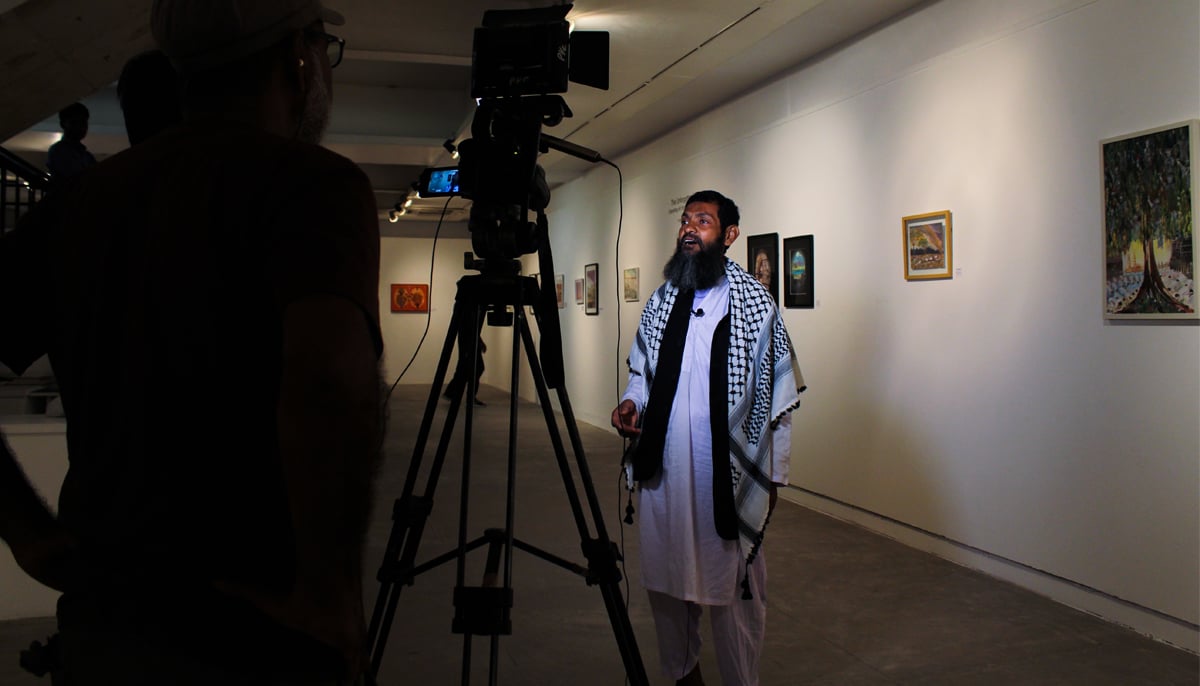
“This is the first time I’m interacting like this,” Ahmed told Geo.tv, describing his experience of sharing his artworks.
“It [paintings] was to send a message to the world that those who talk about human rights, lack humanity themselves,” he said, highlighting the oppression endured at the hands of the US government.
Tale of ‘The Unforgettable Moon’
Ahmed’s art is enthralling, but the story behind how his work made it to the exhibition is equally interesting.
Clive Stafford Smith, a British human rights attorney who began representing Ahmed 15 years ago, told Geo.tv how he identified his client’s talent. The lawyer has, so far, represented around 87 detainees held inside Gitmo and most of them got out sooner or later. He wanted Ahmed and his brother to join the list of the freed men too.
“We had to think of new ways to get him [Ahmed] out and get publicity for him, so people don’t forget them; but also give him something to do. It’s not just about getting people out of prison; it’s about making their lives somehow meaningful,” Clive said.
He spoke about how Ahmed loved art, so he got him art supplies.
“He did hundreds of pictures over the years. At one point, I had him do pictures of his torture. He did that and brought them to one of my meetings with him at Guantanamo,” he said, adding that the pictures were so dramatic he feared the censors would never let it out.
“So instead, I wrote a very detailed description of each picture thinking that I could get artists on the outside to replicate them and then we would have evidence of how and what he’s suffered, so that’s how it all began,” Clive explained.
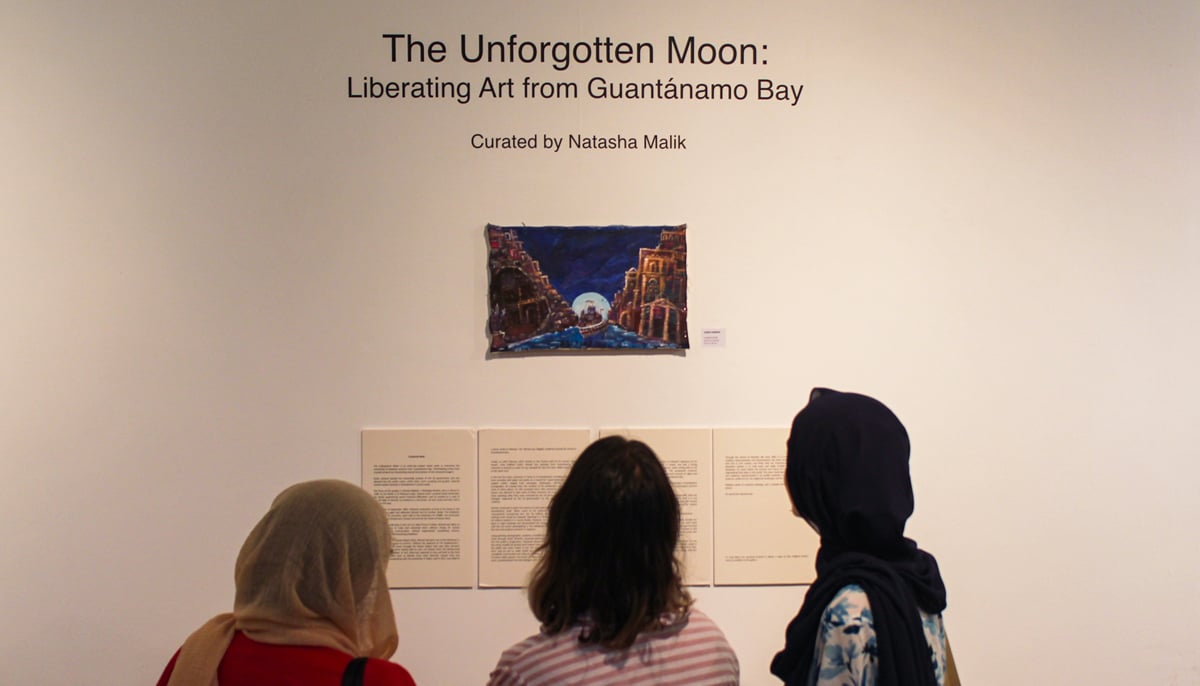
Ahmed’s counsel then reached out to his friend Fatima Bhutto — a writer based in Pakistan, who had already written about the former detainee’s plight at Gitmo. Clive hoped she would help with this project and approach artists to recreate Ahmed’s censored paintings using textual descriptions shared by the lawyers.
“I thought about it and it was such an interesting story that I called up my brother Zulfiqar [Ali Bhutto], who is an artist too, asking if he knew people who might be able to help,” Fatima said responding to Geo.tv.
Fatima then got in touch with Natasha Malik — an Islamabad-based artist — who curated the show at IVS and later took nine other artists on board including Abdullah Qureshi, Aman Rehman, Amra Khan, Faraz Aaamer Khan, Nisha Hassan, Sahyr Sayed, Shehzil Malik, Shehzad Noor and Zainab Zulfiqar.
“I took on the project after Fatima found me. Since then, we had all been in touch working on the show. On that side you’ll see the participating artists’ work which responds to the textual descriptions that Clive gave us,” Natasha said, in an interview with Geo.tv, pointing towards the artworks recreated by artists onboard in the project.
Proceeds earned from all the sold paintings during this show would be dedicated towards the Rabbani family's rehabilitation, a note at the exhibition read.
One painting out of the censored ones titled 'Games' has been released, she added.
Natasha goes on to show the painting released by the US military, which she said hardly posed a threat to national security. “We’re quite lucky to have this in the show. The rest are more interpretations of the text by the artists.”
After attending the preview of the exhibition, Fatima said it was striking for her to see Ahmed’s work. “I spent months thinking about him, his captivity, his rendition and all the torture and difficulty he had endured… I just saw him, listened to him speak and observed his work, and as I said earlier, I found him so frail as person he’s obviously endured so much it’s so hard to think of a man like him as being a danger to any government,” she said.
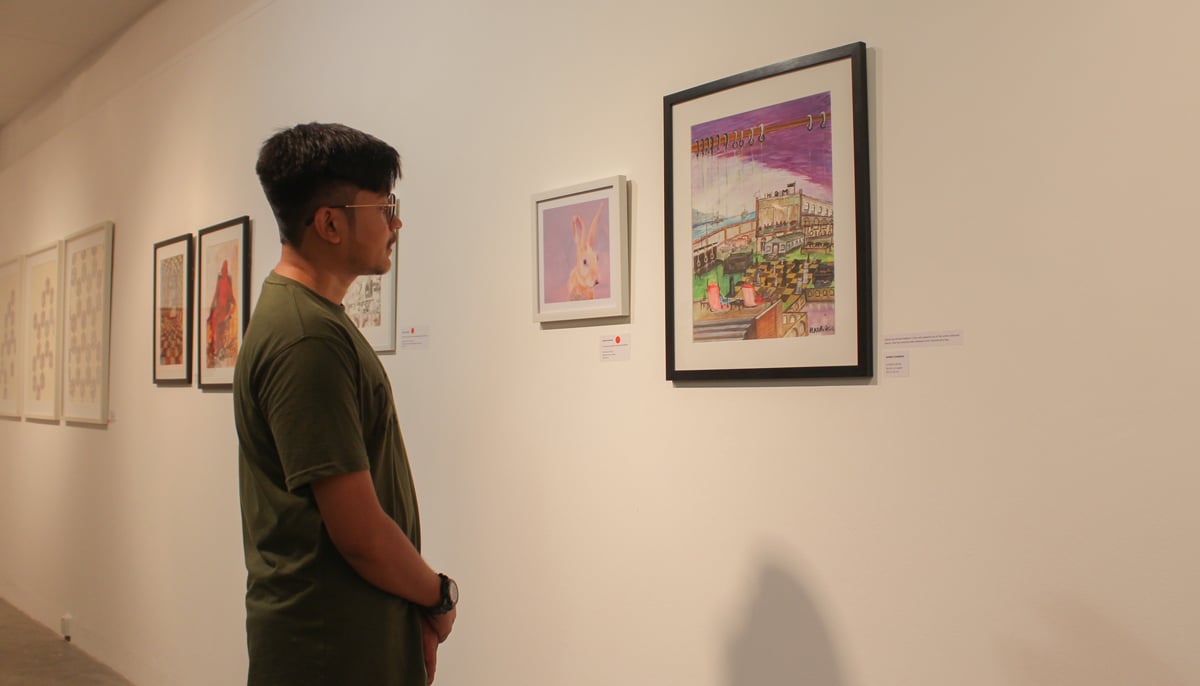
Natasha deemed the exhibition a "clash of worlds", the art world and the legal world, with Ahmed's fellow detainee Saifullah Paracha — who was also wrongfully detained for nearly 20 years, including several years at Guantanamo, and was released in October 2022.
"Clive, Ahmed and Saifullah Paracha gave an informal talk here that day. It opened up people’s eyes quite a bit to see up-close what this experience might have been like for Ahmed. We can’t imagine at all ourselves, but to see it like this is very harrowing," she said.
Saad Rabbani, Ahmed’s son in his early 20s, said he still cannot believe about being reunited with his father. His cousins Abdullah and Ghazi — sons of Abdul Rahim — also share the same feelings about the return of their father and uncle.
“We couldn’t believe when our fathers were returning. It happened as Allah replied to our duas,” said Abdullah.
Ghazi said that the Rabbani brothers don’t talk about what they endured all those years.
“We’ve heard chacha (uncle) talk about it only now at the exhibition,” said Ghazi, Ahmed's younger nephew.
Ahmed's journey towards art
“I properly began painting at Guantanamo in 2011 after classes began in 2010. Initially, there were no facilities for the classes. After continuously requesting for four years, they allowed us. But it was not done properly because they wouldn’t provide supplies like papers and other items. The lawyer wasn’t allowed to bring in supplies,” he said.
Ahmed shared about starting art classes because of his Iraqi-American teacher Adam — a pseudonym given to him by the prison authorities — who fought and sacrificed a lot for the prisoners. “He was also shouted at and discouraged not to pursue the classes, but he fought for us.”
The 54-year-old doesn’t remember the first painting he made but gestured towards the early artworks created by him, which were also placed at the exhibition. “I would initially paint apples, pomegranate, trees and a lot of other things.”
Twelve, among Ahmed’s hundreds of paintings according to him, have been held by the US military in Guantanamo, as they never passed the censors. But one titled 'Games' was approved for release. Describing it in detail, he shared that the artwork depicts the political games played at large.
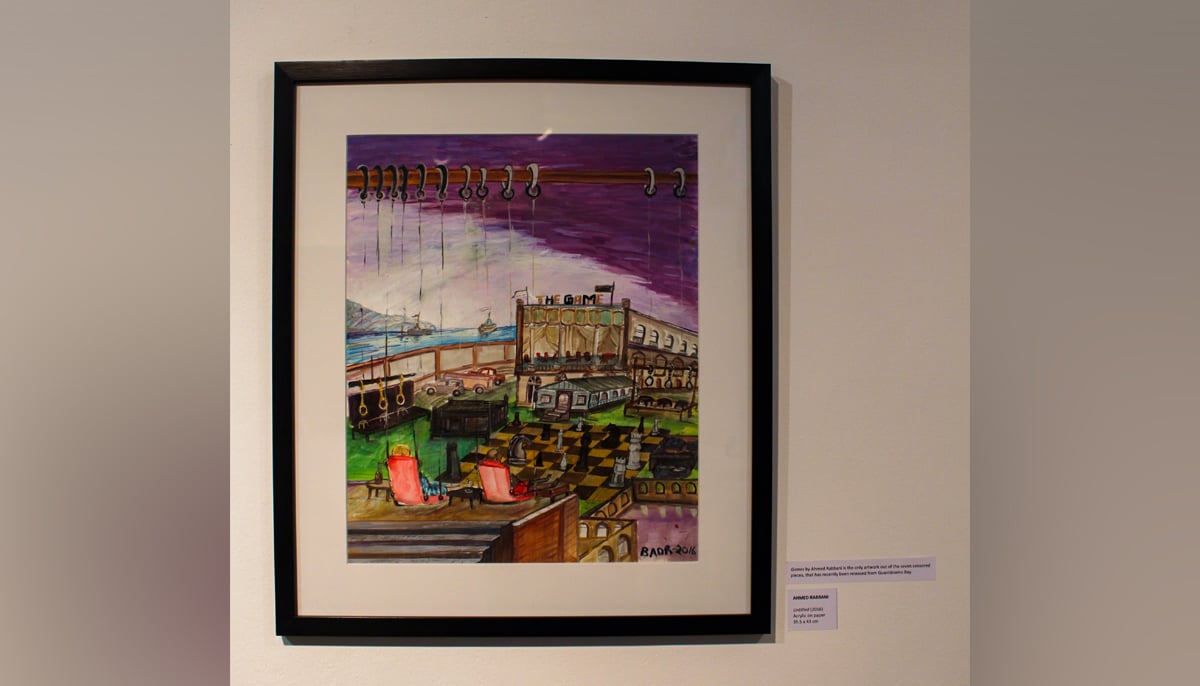
“It depicts a game of chess, a place to hang prisoners, two men — one white and one black — overlooking the Guantanamo Bay compound from a higher position. There is a jail, at the centre of the compound, built like a chicken coop. Everything they have made in the jail is to leave you sick. The toilets were our cells. I have spent 19 years like that,” Ahmed said.
Pointing towards another facility in his painting, he said that it was built using metal and remained ice-cold.
“They keep you here in just shorts. No vest, no socks, no shoes. They would only give a blanket at 10pm in the night and would snatch it back at five in the morning. I continuously spent a year and a half in this facility. This is the harshest space. People were usually kept here for 15 days or a month, but I spent a year and a half,” he described, detailing his harrowing time by explaining the piece.
One of the censored paintings, which remains in the US military’s custody, depicted his journey of being tortured from the time of his arrest in Karachi with minute details, Ahmed said.
“I painted the torture endured at six places — in Karachi, Pakistan; during the journey; in CIA’s andhera jail (dark prison); in Bagram; in Guantanamo; and in the end I drew myself being carried out as a corpse to be shifted back to Karachi,” he described.
In another censored painting, he spoke about drawing himself being dragged away from his family but later returned as a body. He further described that this painting also portrayed him being stripped and tortured.
“I showed the torture where they hung and photographed me buff naked. Ladies [military personnel] would do this to instil psychological abuse. I drew handcuffs and chains,” he said.
Ahmed talks about his painting of the detention room. “I made this in 2016. This was my blanket, this was my sofa, this was my brief case, which broke when I came to Islamabad," he said, gesturing at the artwork.
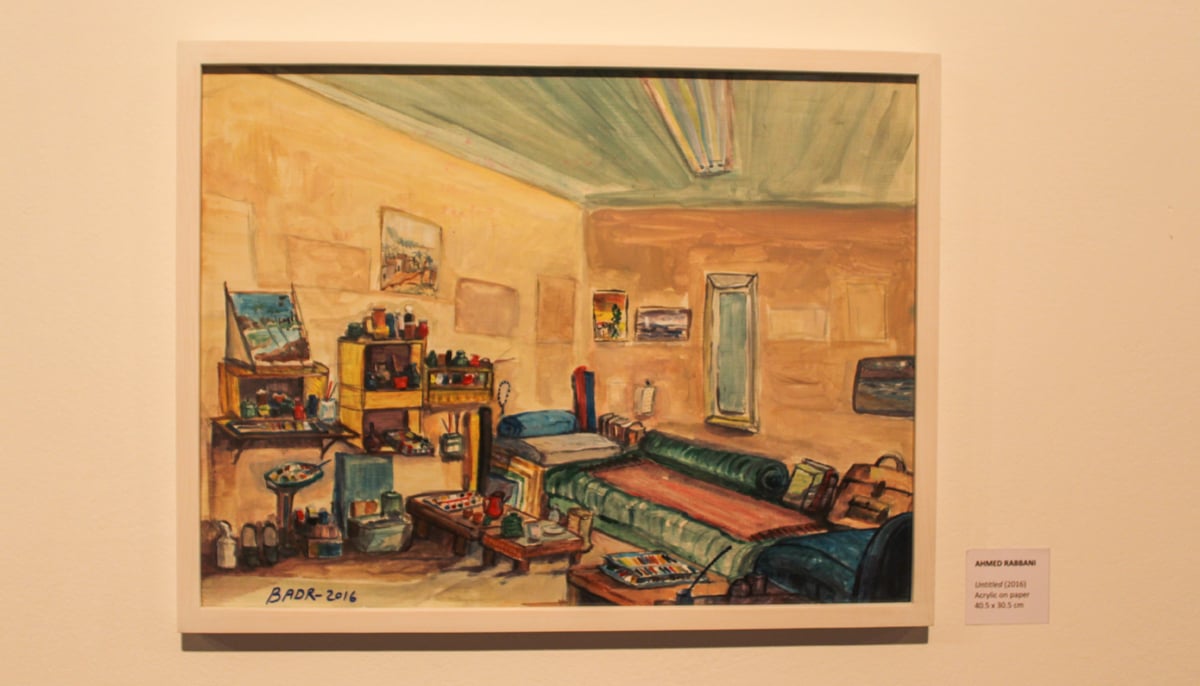
When Ahmed began painting, they would give him one colour at a time, then take it back. The process, he shared, was frustrating.
"The teacher doesn’t deal with you and remains at a distance. There is a table in between, the teacher would give something to the guard and then he would pass it on to me. Then it was returned in the same way. They did this for two years," he narrated.
The ex-Guantanamo detainee explained he did not only use colours but also coffee, saffron, turmeric powder, and other spices to draw the paintings. On some days, when left with no supplies but pent-up frustration and agony, Ahmed would even use his own blood — oozing out of the wounds due to resistance by him against the physical torture at the jail — and faeces to paint on the prison walls.
Responding to a question about his favourite colour, Ahmed mentioned “grey” terming his own response “strange”.
“Our world is grey. It is neither white nor black. Its colour is like the one you are wearing,” he said, pointing at my scarf.
This came as a surprise because most of his artworks are splashed with a diverse colour palette, while grey seems largely camouflaged. “It is inspired by Pakistan,” he said talking about the hues used in his pieces.
When asked how he would connect with his creative side and nature while being detained inside Guantanamo Bay, Ahmed said prisoners could watch the sea — an element he has abundantly used in his paintings — by climbing up an elevated structure within the compound.
Ahmed currently has around 300 paintings with him — all bearing a stamp of approval for release by the US forces at Gitmo. There are several more yet to be handed over to him, while he already sent a little over 100 to his family along with the letters written to them during his period of incarceration.
His palette, too, was a part of this unconventional show. “I worked with this palette for 10 years,” Ahmed told Geo.tv. Most of Ahmed’s paintings on display at the IVS are signed BADR — a nickname given to him by his mother that means moon in Arabic — in all-caps, mirrored text with the year mentioned alongside.
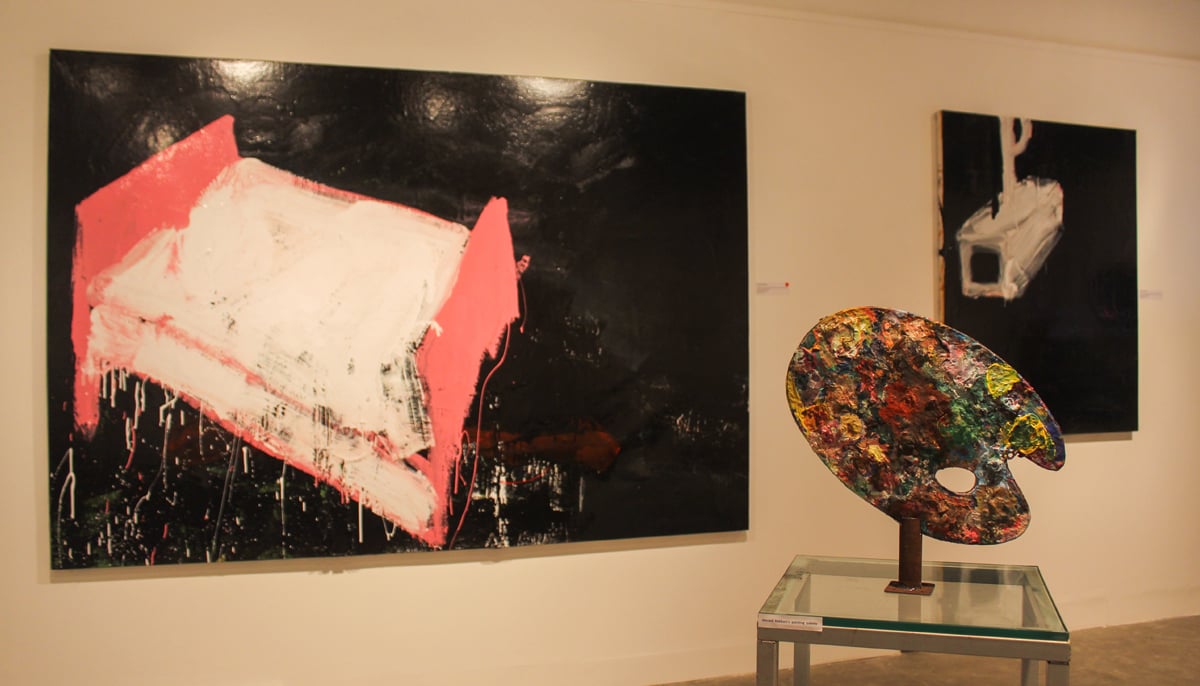
While he plans to continue making art, which he has mastered over several years, Ahmed also spoke about his future plans and reconnecting with his love for cooking.
“I will establish a ‘Guantanamo Hotel’ here,” he shared with a hearty laugh.
Life before Guantanamo
Ahmed’s father, according to him, came to Karachi from India’s Deoband town before partition. He then spent some time in Yemen and eventually, in 1950, moved to Saudi Arabia. In 1969, Ahmed — a Rohingya Muslim — was born there, but never received Saudi citizenship. He mentioned coming to Pakistan in 1991.
His return, however, was a result of authorities deporting him to Pakistan for selling drugs for five years, Fatima wrote in an article for Foreign Policy. Years later in Karachi, he began driving a taxi and owing to his impeccable Arabic skills, Arabs, too, were among his clients with whom he drove to several destinations, even Afghanistan, she added.
Through the years, Ahmed’s life withstood challenging events dotted by a sliver of happiness including his marriage and the birth of his two children — a son and a daughter. However, his married life was cut short following a divorce. But later, he remarried.
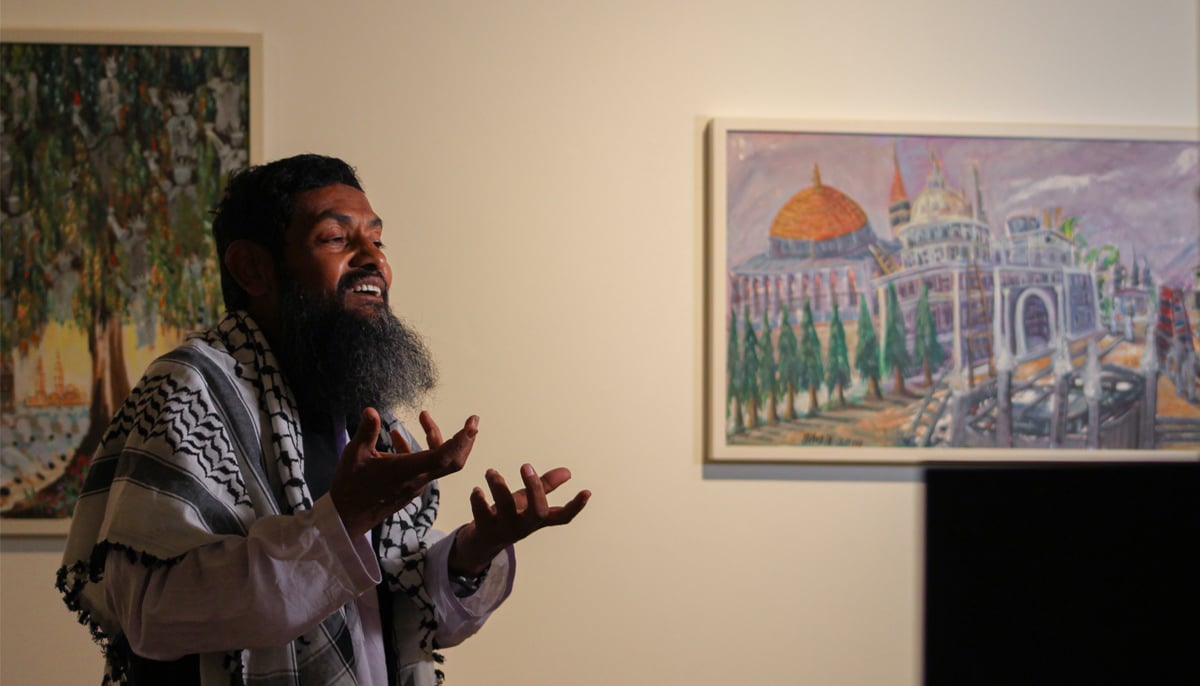
His life turned upside down when, on the ill-fated night of September 10, 2002 — a year after the 9/11 attack, Ahmed and his brother were arrested by Pakistani authorities in Karachi for allegedly facilitating members of al-Qaeda — among other allegations — and eventually handed over to the US for $5,000 bounty under former president General (retd) Pervez Musharraf’s government.
At the time of arrest, the then 33-year-old's wife was expecting, but his youngest son, Jawad, was born some months later.
“They said: ‘You are al-Qaeda’,” Ahmed recounted, sharing the reason behind his arrest.
His arrest came after he was falsely identified as an al-Qaeda terrorist Hassan Ghul who, too, was kept in the same prison as Ahmed. Clive said “poor Ahmed” was still sent to Guantanamo. After cooperating during his imprisonment, Ghul — an actual terrorist — was freed and came back to Pakistan.
“He went back to his terrorism and was killed in a drone strike in October 2012,” Clive said, adding how Ahmed remained imprisoned illegally, denied due process and a fair trial, and had to put up with harrowing inhumane torture.
Living in incarceration
Recounting the journey from Karachi to Guantanamo, Ahmed said: “We were first taken to Afghanistan in CIA’s andhera jail (dark prison) where I spent two years. Then they shifted me to Bagram jail for four months. I was eventually transferred to Guantanamo in 2004.”
In the CIA jail, he added, they would make them sit on blocks of ice during the investigation.
“Our clothes would be drenched. They would cover the mouth and eyes with tape, and cover the head with a sack tying it with a tape around the neck. Then they would drag us towards the car and bang us on the wall while doing so. They would make us sit on a vehicle's tyre. Then a man weighing 200 kilos would sit on our back. Two people would pull me from either end — one would hold my hands and the other would pull my legs,” he said.
Ahmed shared that the prisoners, including himself, were beaten with chains. “There is no sign of humanity. I don’t remember a day where I haven’t fallen sick for three days after interrogation.”
The former Guantanamo prisoner said that both he and his brother did not imagine being incarcerated for two decades when they were held in Bagram.
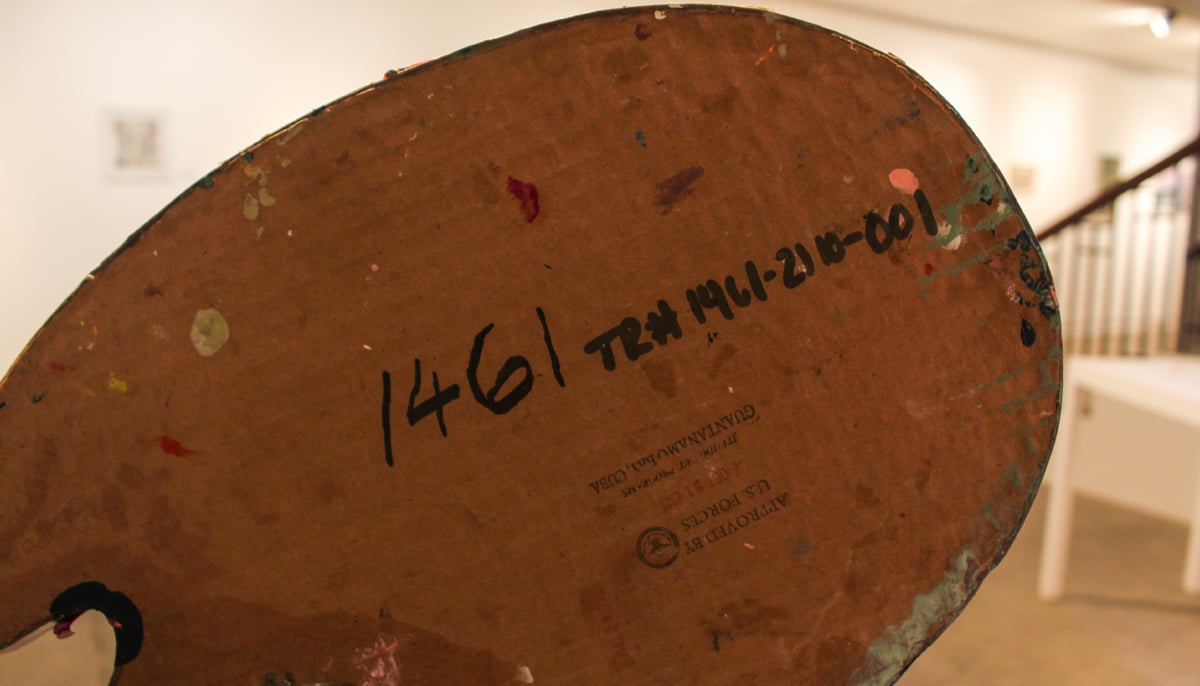
“We expected to be freed within one to two months, as we heard America respects human rights, ensures justice and talks about humanity. But from the first day till the day we returned after being freed for being innocent, we were treated inhumanly. We were brought back with our eyes and ears covered, hands and body tied in chains,” he said
In the multiple prisons during detention, Ahmed detailed, the brothers were made to sit on a cold floor for several hours. They then conducted a medical checkup and shifted them to a building.
“We were taken to a new building after climbing metal stairs. It was clean and new. We were the first people to use and occupy the blocks at the prison. Its walls were white and huge lights were placed very close to us emitting piercing rays. There was nothing in the cell, neither slippers nor a blanket. There was just a small towel, a glue-like liquid toothpaste that reeked and a small-sized toothbrush and soap,” he mentioned.
Ahmed described the prison’s temperature as cold as a “freezer”. There was no outlet in the prison cell, he said, but a small fixed window on the wall through which he could only decipher the time of day and not even see through it.
“We were refused blankets when cold. They would deny us dinner if we were late for it and had to sleep on an empty stomach,” the ex-prisoner said, adding that only those who cooperated during interrogation were provided with some facility, which usually didn’t last long.
“I would ask for everything by being stubborn,” he said.
Ahmed, before going on a series of hunger strikes starting from 2013 to protest against his detention, spoke about often refusing to eat the food provided at the jail, which was mostly inadequate for an adult. “If I would refuse to eat something, they would throw it away rather than give it to another prisoner,” Ahmed said.
Paracha, Clive quoted, used the lyrics of Eagles’ 'Hotel California' to describe the agonising ordeal of those locked behind the Gitmo perfectly:
Last thing I remember, I was
Running for the door
I had to find the passage back
To the place I was before
"Relax, " said the night man
"We are programmed to receive
You can check out any time you like
But you can never leave"
For years, Ahmed and Abdul Rahim’s family were unaware of their existence. Their sons shared that they had lost all hope, but a letter from the International Committee of the Red Cross (ICRC), after seven to eight years of their arrest, they said, confirmed their detention at Guantanamo. The family then began pursuing the return of the two prisoners. His lawyer Clive and many campaigns against the human rights violations at Gitmo made it possible for them to taste freedom eventually.
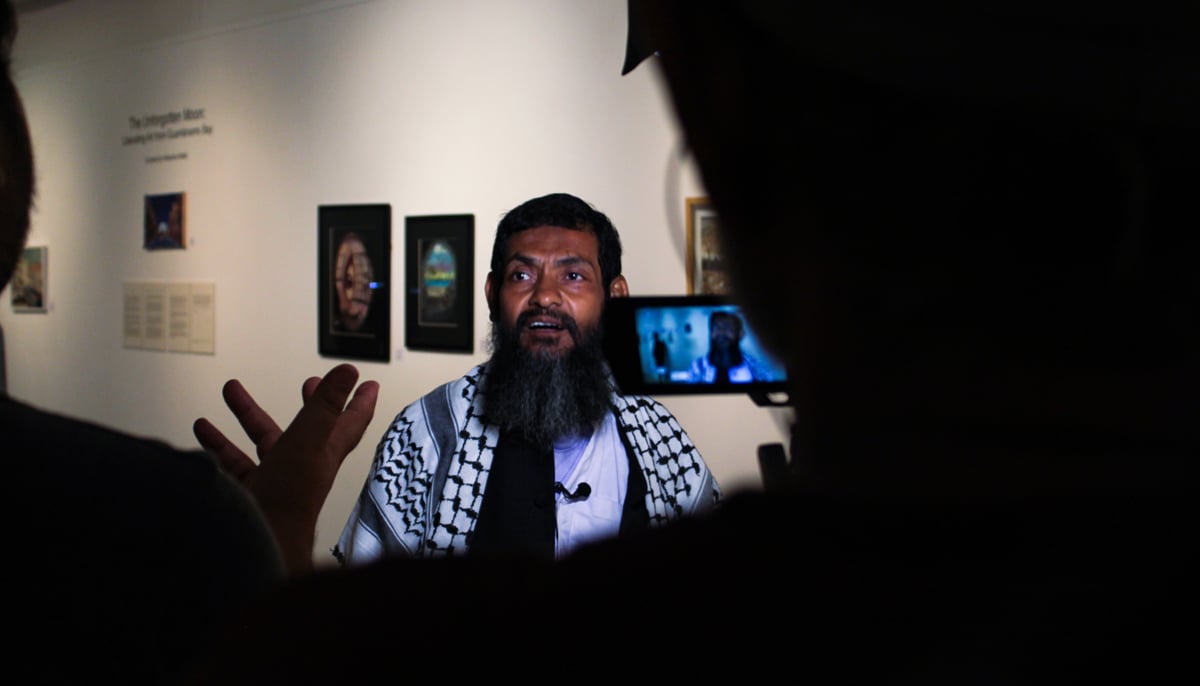
“He was always going to get out. After we started getting people out, in the very early days, we couldn’t be sure because in the madness after 9/11, there was all sorts of craziness going on in America. But once we started getting people out, he was always going to get home, as long as he was alive,” the lawyer emphasised.
Fatima referred to Ahmed's sufferings as a "tragedy".
"If they had been guilty of something then obviously the story would’ve been different. But they never were, and it’s a tragedy. Guantanamo would be a tragedy for centuries and centuries to come," she said.
Even though Ahmed was sure about his return owing to his relentless faith, his resentment towards the injustice he and his family suffered is so deep-seated that leaves him with no option but to despise his oppressors.
“They are so full of pride that they would tell me: ‘You are not innocent, but we are letting you go because there is no evidence against you.’ They wouldn’t accept their fault. I have asked them to compensate me with $21 million for the nearly 21 years. I will not accept even a million less than that,” he added, hoping to be compensated for losing two decades of his life.
The Rabbani brothers are free men today, but 32 more prisoners, according to the US Department of Justice, are still languishing inside Gitmo. Three among them, Clive said, are Pakistanis.
“I want everyone to know they are not humans. This is a reality. You wouldn’t believe me unless you see it for yourself,” Ahmed bemoaned, knowing how his life will never be the same anymore.
The silver in Ahmed’s beard, some white strands of hair on his head, his face creased with years of anguish, torture and injustice and the wrinkles on his hands speak volumes about his feelings and louder than any words ever could.
Rabia Mushtaq is a staffer at Geo.tv. She tweets @rabiamush



